Abstract
The actions of neostigmine have been examined using electrical recording from normal and denervated superior cervical ganglia from rat and kitten. Neostigmine produced a rapid and reversible depolarization of the ganglion cells, both in vitro and in vivo. This depolarization could be antagonized by hexamethonium, and was not related to an anticholinesterase action. Eserine blocked transmission and only produced a small depolarization of slow onset and development. This depolarization was reversible, but could not be antagonized by hexamethonium.
Full text
PDF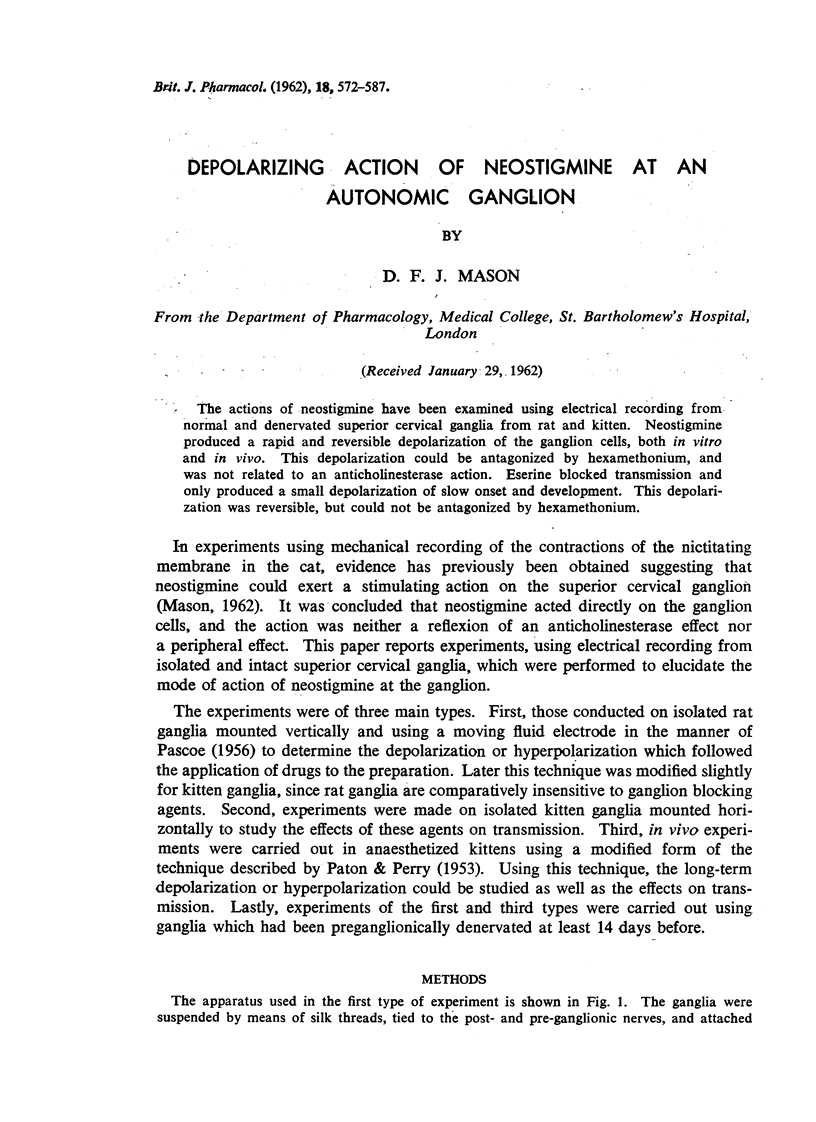
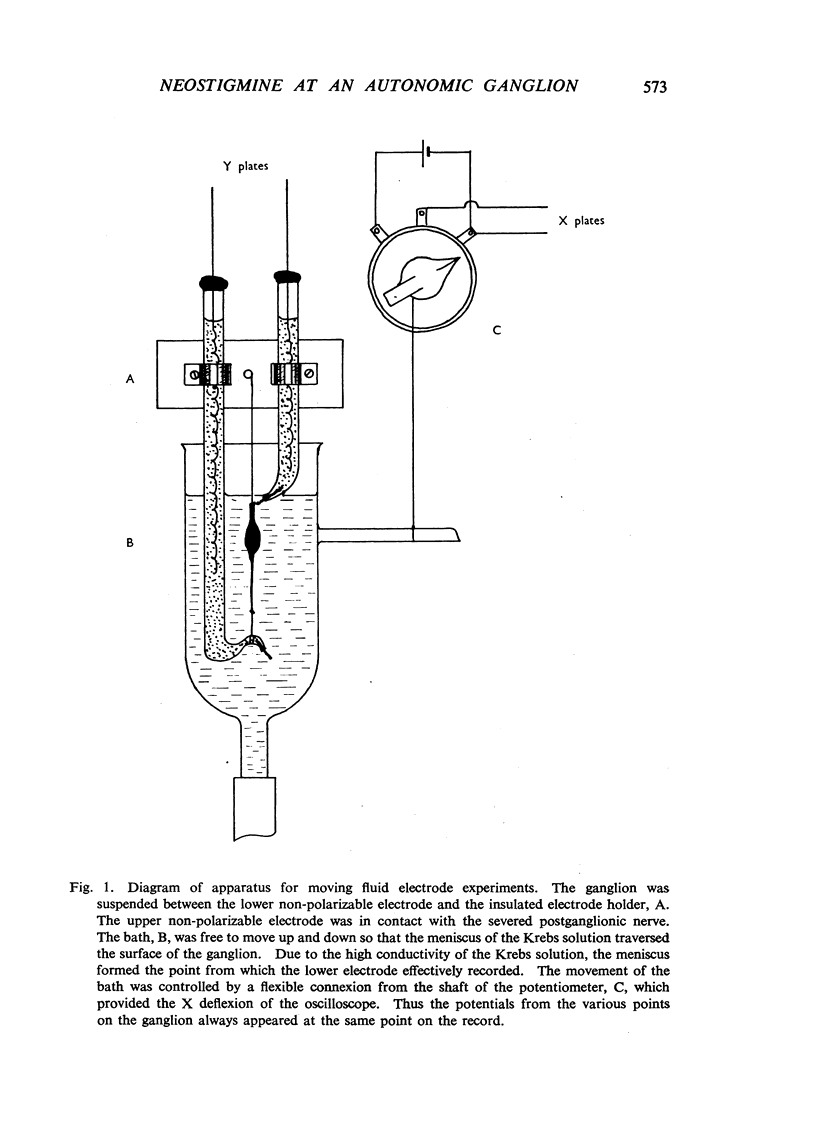
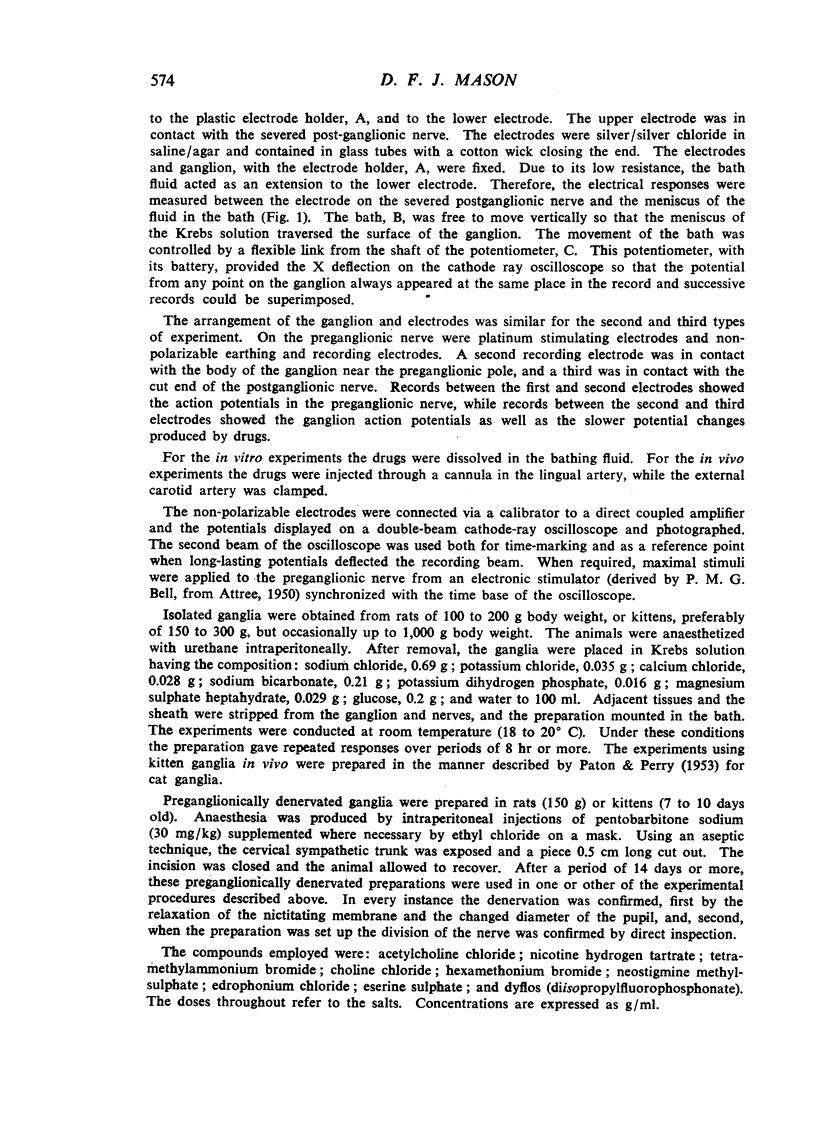

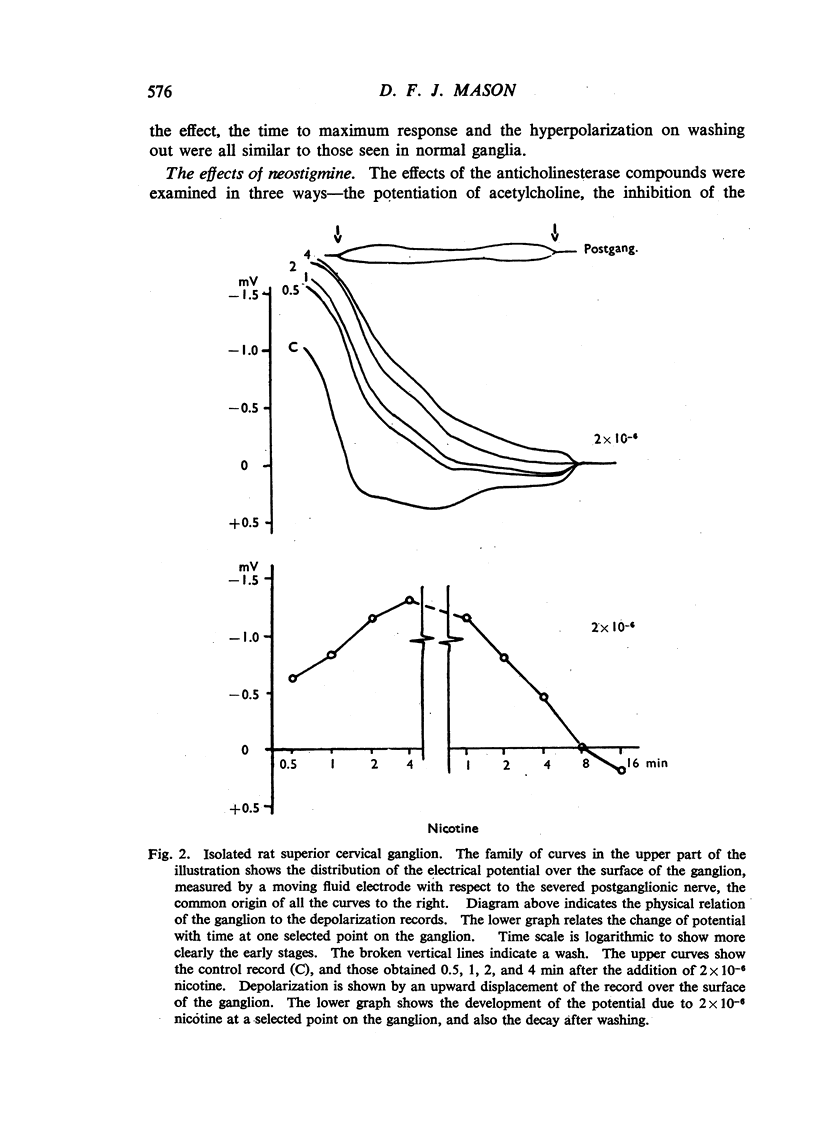
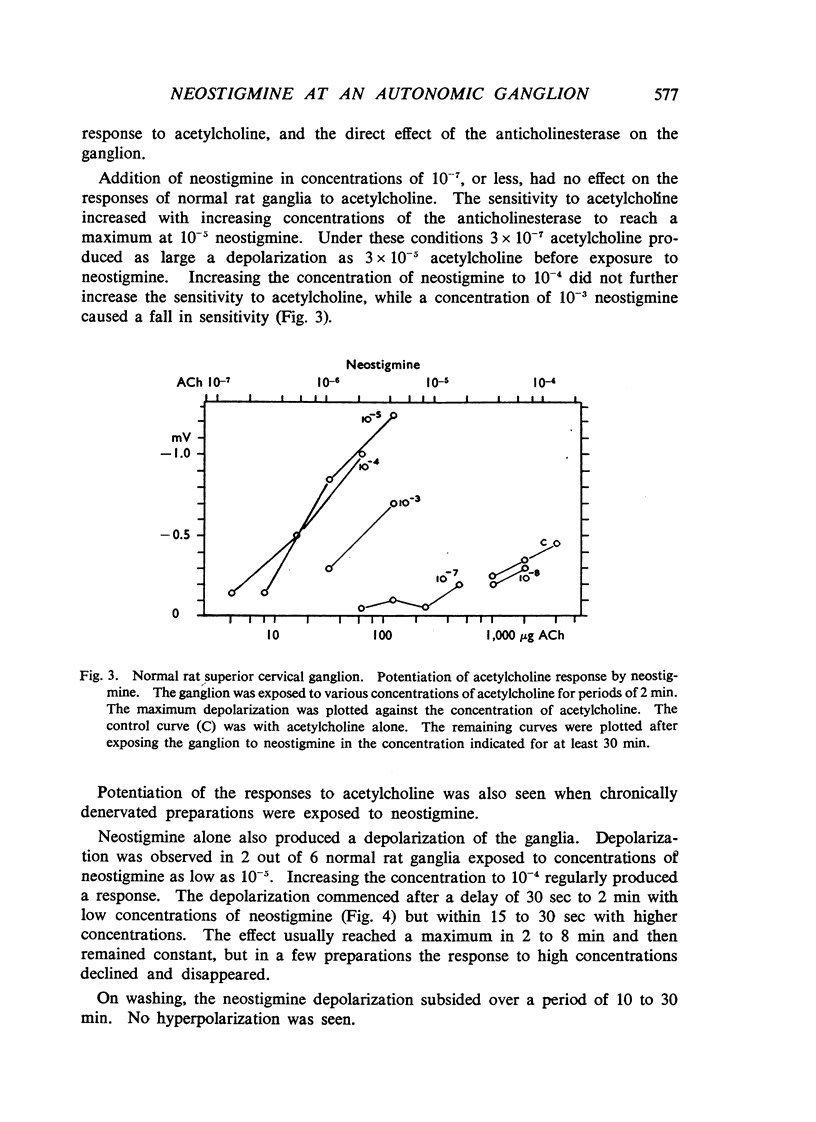
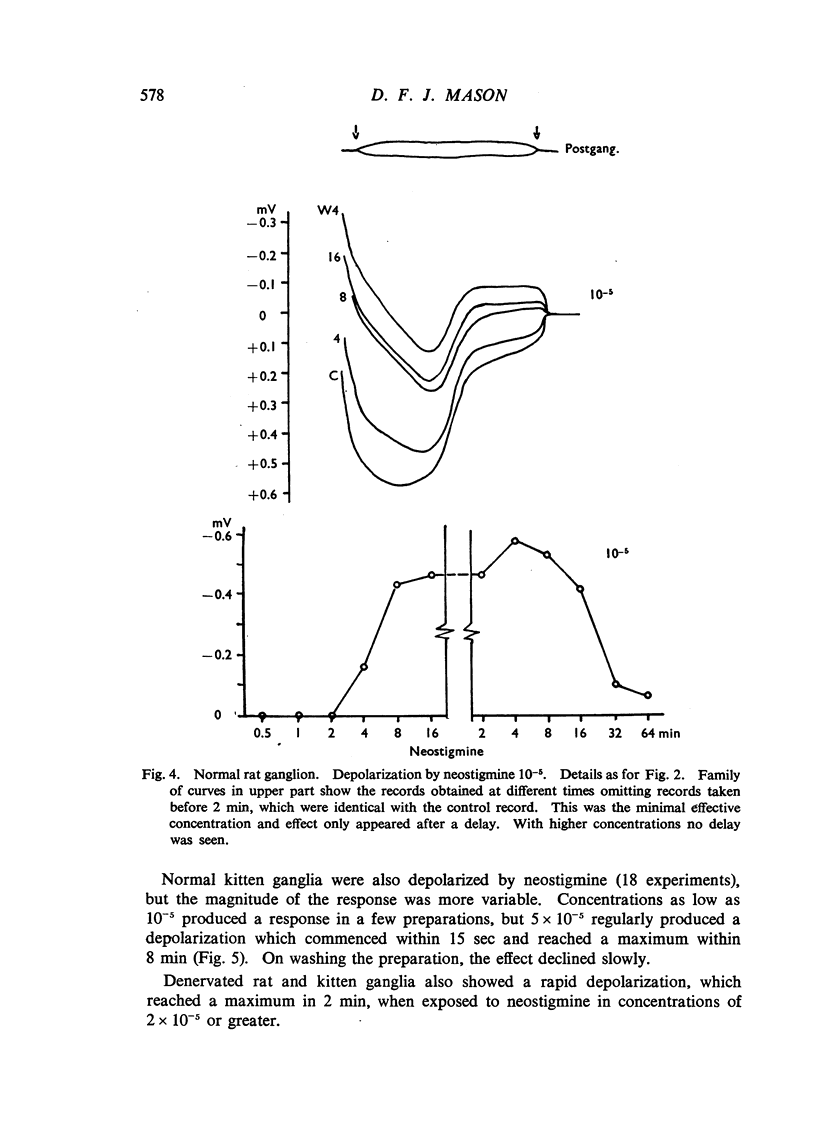
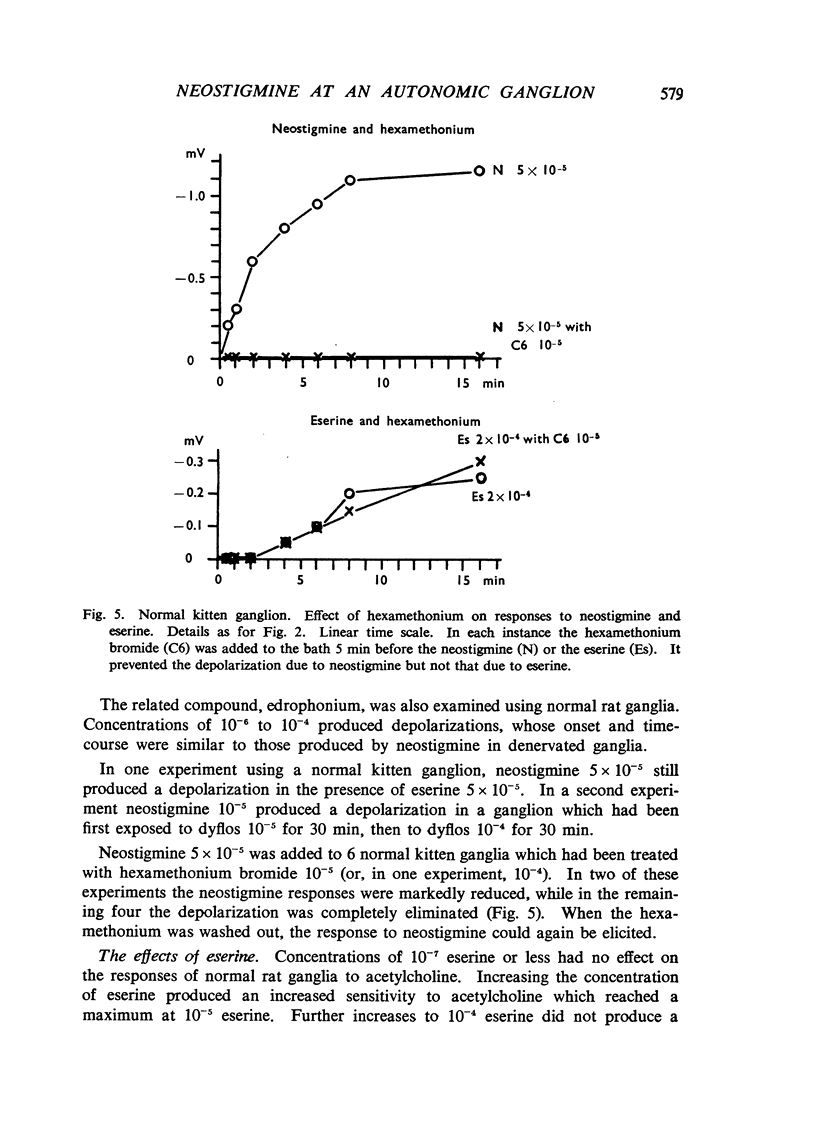
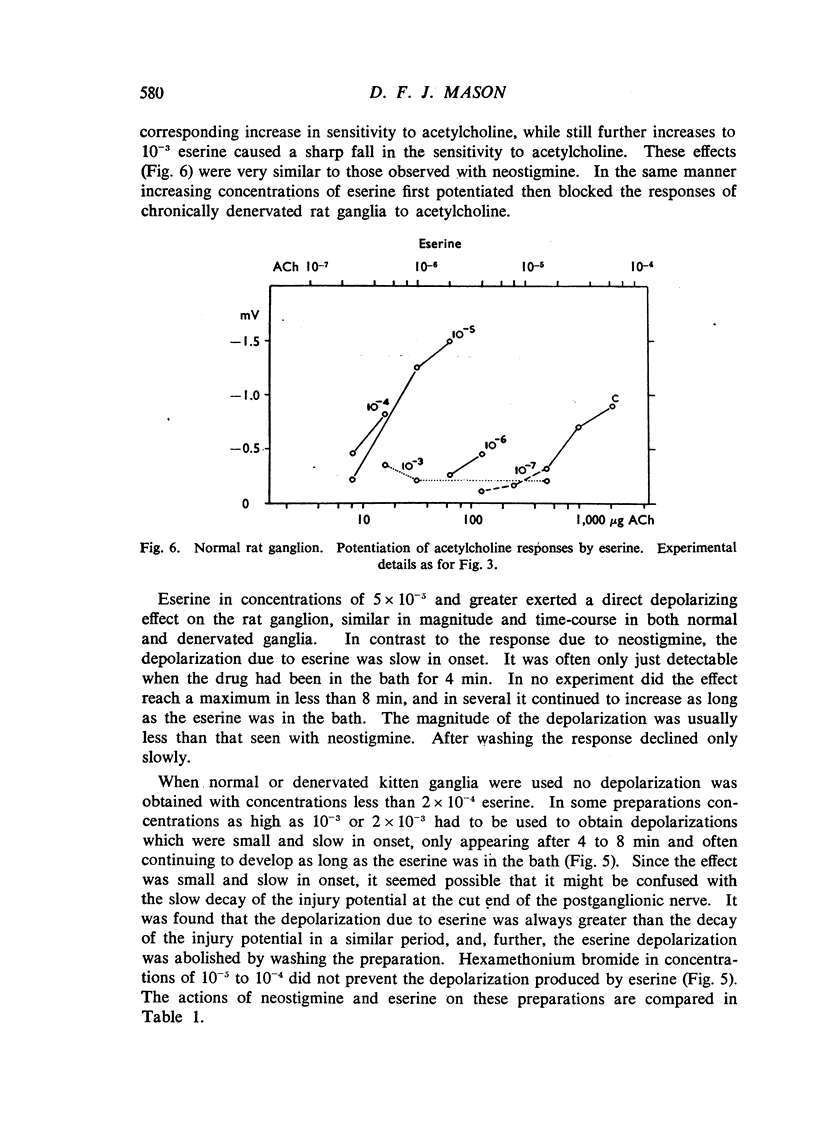
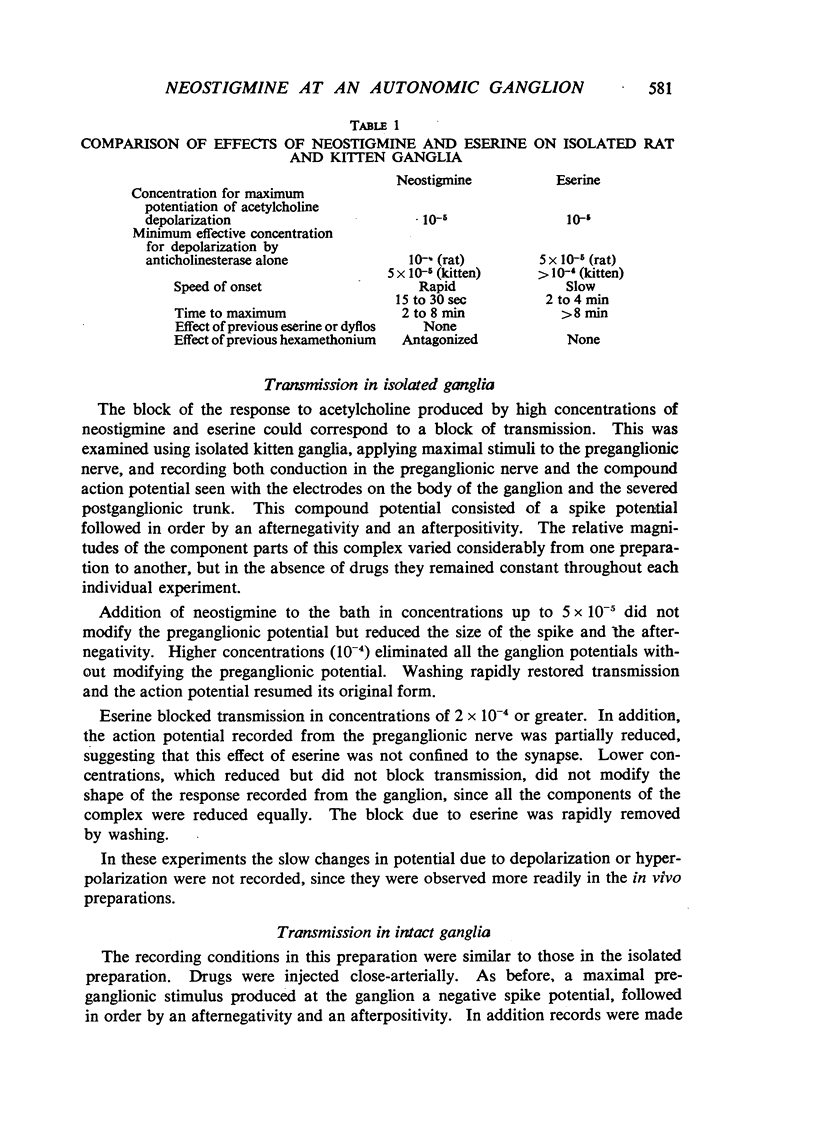
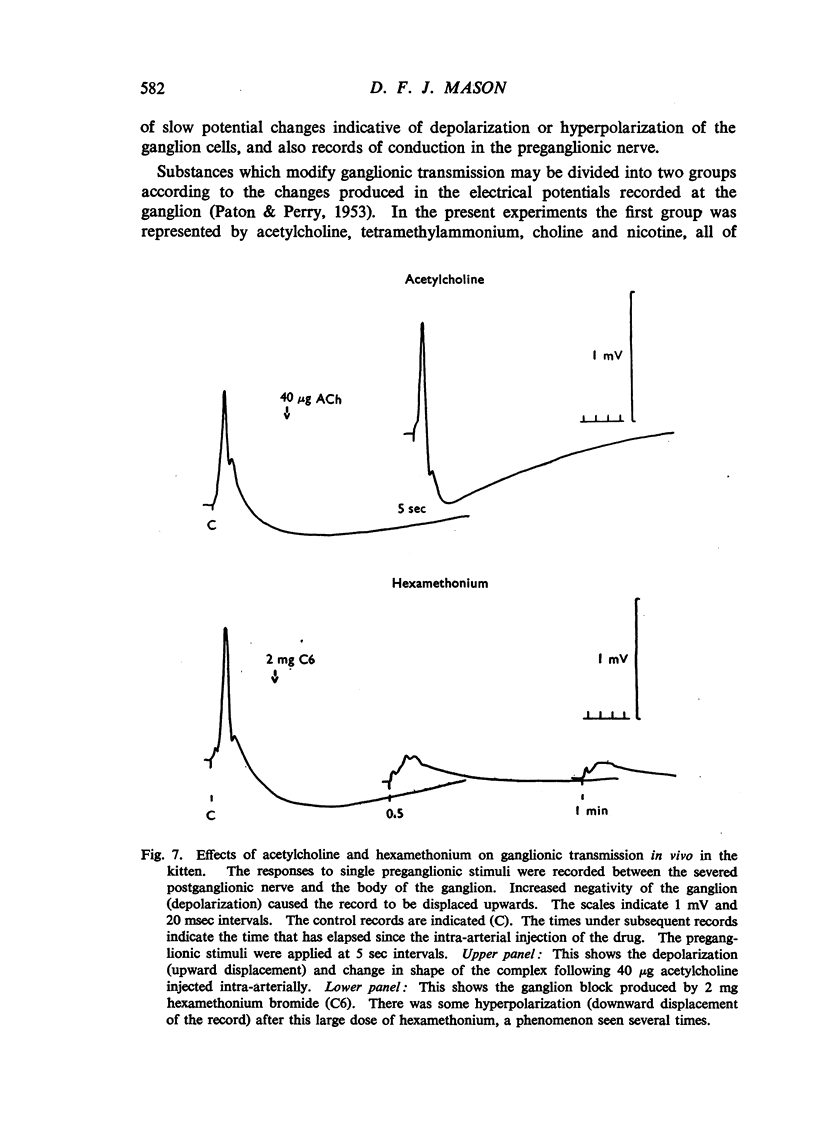
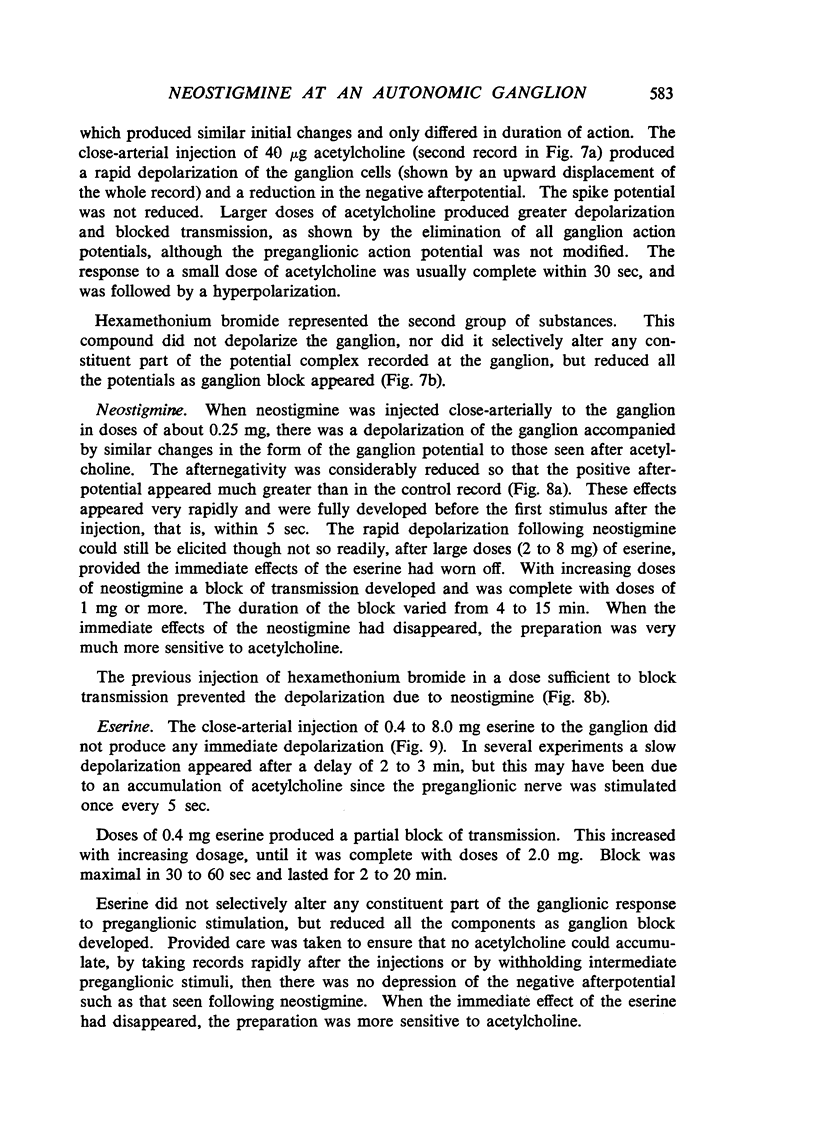

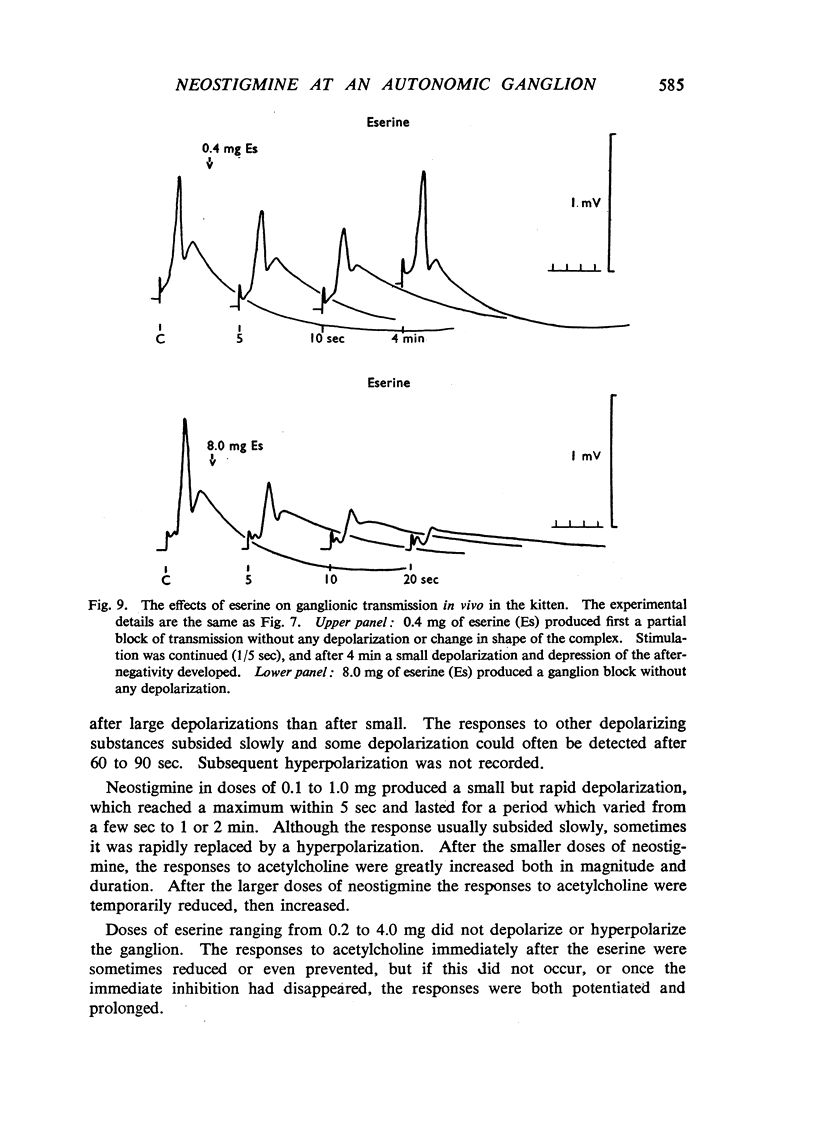
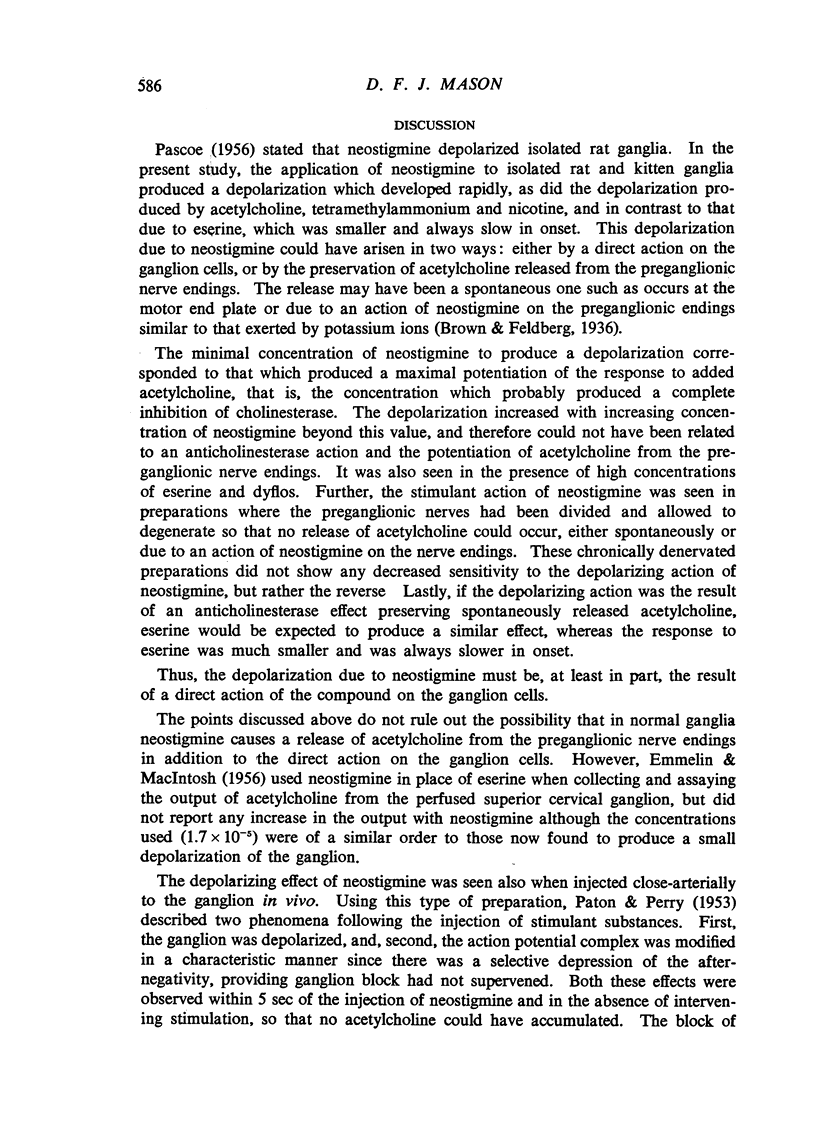
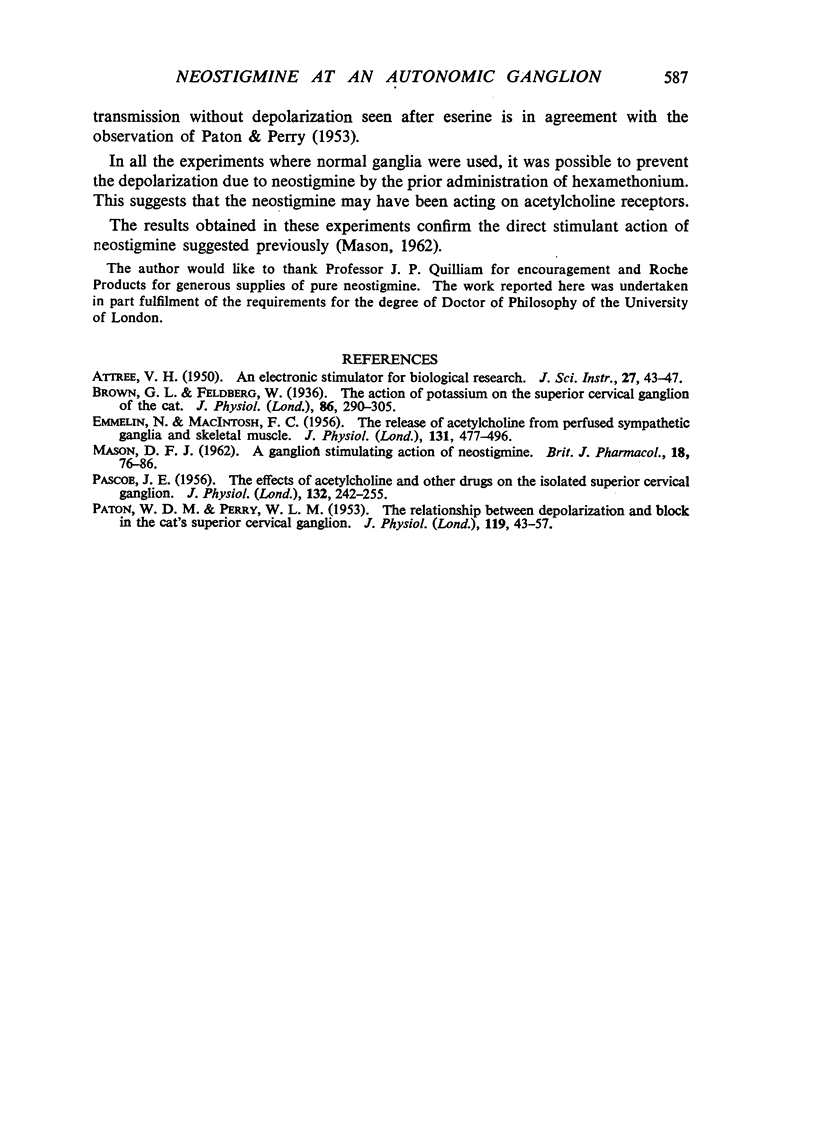
Selected References
These references are in PubMed. This may not be the complete list of references from this article.
- Brown G. L., Feldberg W. The action of potassium on the superior cervical ganglion of the cat. J Physiol. 1936 Mar 9;86(3):290–305. doi: 10.1113/jphysiol.1936.sp003364. [DOI] [PMC free article] [PubMed] [Google Scholar]
- EMMELIN N., MACINTOSH F. C. The release of acetylcholine from perfused sympathetic ganglia and skeletal muscles. J Physiol. 1956 Feb 28;131(2):477–496. doi: 10.1113/jphysiol.1956.sp005477. [DOI] [PMC free article] [PubMed] [Google Scholar]
- MASON D. F. A ganglion stimulating action of neostigmine. Br J Pharmacol Chemother. 1962 Feb;18:76–86. doi: 10.1111/j.1476-5381.1962.tb01152.x. [DOI] [PMC free article] [PubMed] [Google Scholar]
- PASCOE J. E. The effects of acetylcholine and other drugs on the isolated superior cervical ganglion. J Physiol. 1956 Apr 27;132(1):242–255. doi: 10.1113/jphysiol.1956.sp005519. [DOI] [PMC free article] [PubMed] [Google Scholar]
- PATON W. D. M., PERRY W. L. M. The relationship between depolarization and block in the cat's superior cervical ganglion. J Physiol. 1953 Jan;119(1):43–57. doi: 10.1113/jphysiol.1953.sp004827. [DOI] [PMC free article] [PubMed] [Google Scholar]


